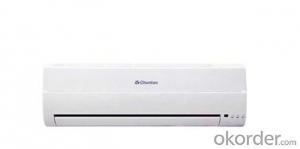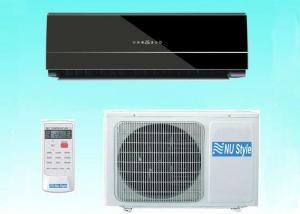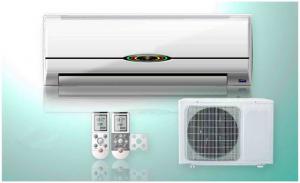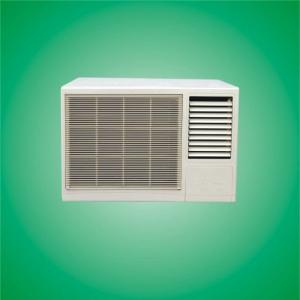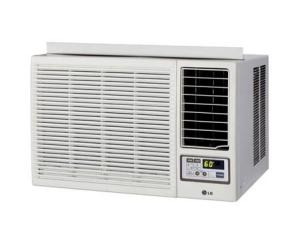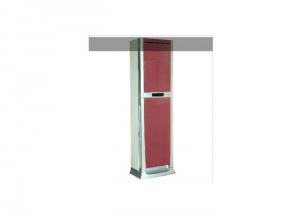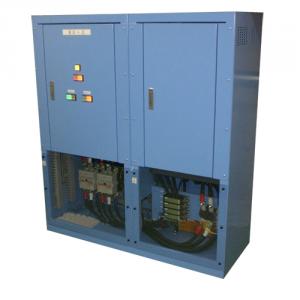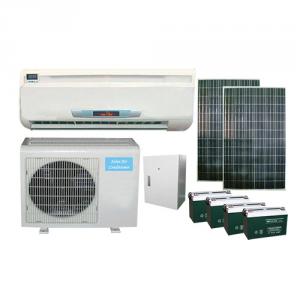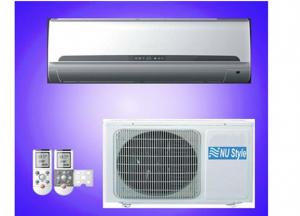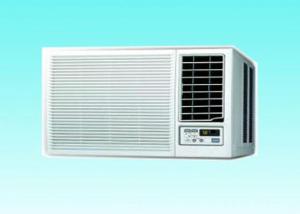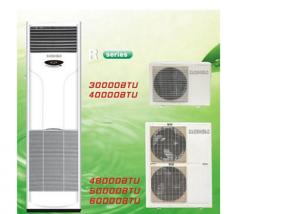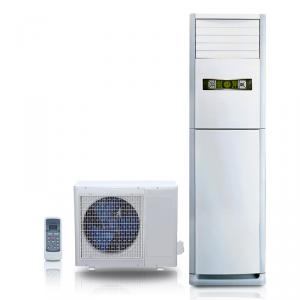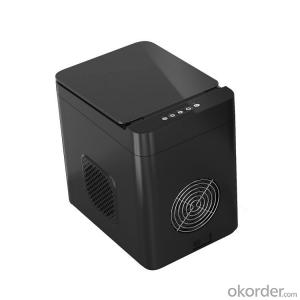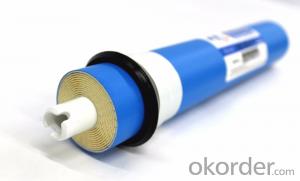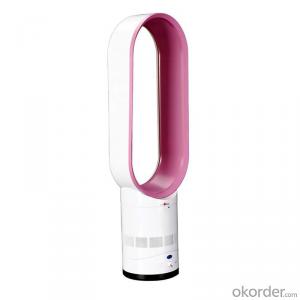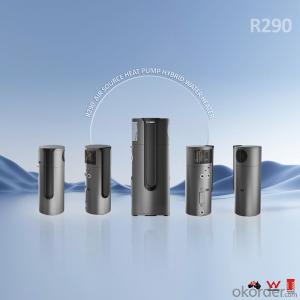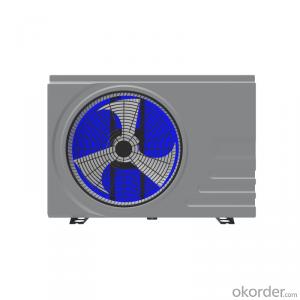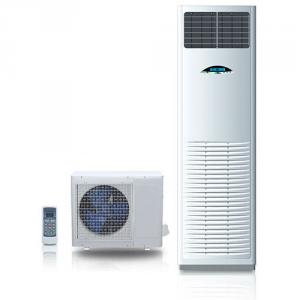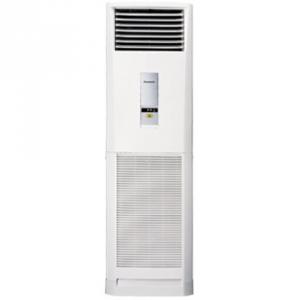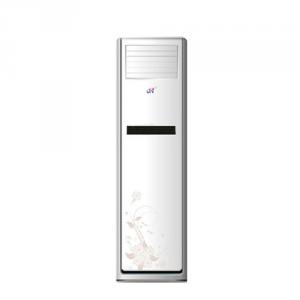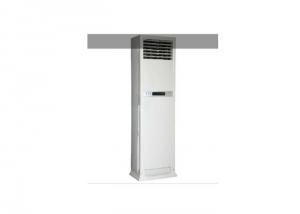Commercial commerclal air conditioner FR28W/B
- Loading Port:
- Shanghai
- Payment Terms:
- TT OR LC
- Min Order Qty:
- 1 unit
- Supply Capability:
- 20 unit/month
OKorder Service Pledge
Quality Product, Order Online Tracking, Timely Delivery
OKorder Financial Service
Credit Rating, Credit Services, Credit Purchasing
You Might Also Like
Quick Details
| Condition: | New | Brand Name: | chunlan | Place of Origin: | Jiangsu China (Mainland) |
| Use: | Room | Power Source: | Electrical | Power Type: | AC |
| Type: | Central Air Conditioners | Cooling/Heating: | Cooling/Heating | Certification: | CE,RoHS,SASO |
| Capacity (btu): | 28000 | COP: | 2 | EER: | 3.76 |
| Power (W): | 9500 | Voltage (V): | 220 | Model Number: | FR28W/B |
| whitef: | white |
Packaging & Delivery
| Packaging Detail: | Packing Demensions (D*W*H)mm Inside 500*1295*2027 500*1295*2027 Outside 864*1564*1148 864*1564*1148 |
| Delivery Detail: | 20-30 days |
Specifications
chunlan unitary type air conditioner makes better effect of cooling or heating with accessorial electric hesting function
| Performance Model | LF28W/B | FR28W/B | |||||||
| heating capacity | W | 28000 | 28000(7500) | ||||||
| Power supply | V,Hz | 380V,3PH,50Hz | |||||||
| Air flow(inside) | m3/h | 4600 | 4600 | ||||||
| Voltage range | V | 342-418 | |||||||
| Charge | Kg | 8.0(R22) | 11.5(R22) | ||||||
| Cooling power input | W | 10700 | 9800 | ||||||
| Cooling current input | A | 18.5 | 16.5 | ||||||
| Heating power input | W | 8800(7500) | |||||||
| Heating current input | A | 15.5/11.3 | |||||||
| Noise Level(inside/outside) | dB(A) | 63/68 | 63/68 | ||||||
| Packing Demensions | Inside | 500*1295*2027 | 500*1295*2027 | ||||||
| (D*W*H)mm | Outside | 864*1564*1148 | 864*1564*1148 | ||||||
| Net Dementions | Inside | 400*1200*1863 | 400*1200*1863 | ||||||
| (D*W*H)mm | Outside | 750*1450*964 | 750*1450*964 | ||||||
| Net weight(inside/outside) | Kg | 143/172 | 143/172 | ||||||
| Conainer load | 20/40/40H | 8/16/16 | 8/16/16 | ||||||
Central air conditioning solution,The frist service brand
- Q:The working principle of air pressure switch?
- Jetta air conditioning 3 thread working principle of the pressure switch: (1) three lines, a 12 v. (2) the other two root is a high voltage switch, one is the atmospheric pressure switch, pressure is too high will disconnect the compressor electromagnetic clutch. The three lines of air conditioning plug connected to the plug: (1) wire (mostly red or brown) plug or socket on L interface, (2) the zero line (in blue or green) on N interface, (3) the ground wire (double color) on E interface.
- Q:What are the common problems with air conditioners?
- Air conditioners may encounter various issues that are commonly observed. A lack of cooling is a frequent problem, which can arise from multiple factors like an unclean air filter, low levels of refrigerant, a malfunctioning compressor, or a faulty thermostat. Another issue often observed is inadequate airflow, which can result from a dirty evaporator coil, a blocked or unclean air duct, or a malfunctioning fan motor. Moreover, air conditioners might experience leaks, which can be attributed to a damaged condensate drain line, a clogged drain pan, or a faulty seal. Additional common problems encompass peculiar noises emanating from the unit, such as rattling or grinding sounds that may indicate a loose or damaged component, as well as electrical complications like blown fuses or faulty wiring. Promptly addressing these problems is crucial as they can diminish efficiency, lead to higher energy bills, and even result in complete system failure if neglected. Regular maintenance and inspections conducted by a professional can aid in preventing these problems and ensuring the optimal functioning of the air conditioner.
- Q:Is the household air conditioner, I here are generally only use in the summer, winter will not use?
- Winter best meets once every two months, electricity heating (compressor) twenty minutes before opening, according to the remote boot again! Once a half an hour! Air conditioning often period without compressor 'four-way valve will card cylinder, jam!
- Q:Household air conditioning open 24 hours a day, it's about how much electricity
- How much the power consumption of air conditioning and outdoor environment temperature, air conditioning room size, orientation and the size of the window, sealing situation, every day the number of doors, room floor has a lot to do, has an effect on how much the power consumption of air conditioning
- Q:Can an air conditioner be used in a hospital?
- Indeed, hospitals utilize air conditioners to create a pleasant and sanitary atmosphere for patients, personnel, and guests. These systems are essential for controlling temperature, humidity, and airflow within hospital premises, promoting patient well-being and recuperation. Moreover, air conditioners significantly contribute to upholding air quality by effectively eliminating pollutants, allergens, and disease-causing particles, consequently minimizing the likelihood of airborne disease transmission. Additionally, hospital air conditioning systems incorporate specialized filters and advanced control mechanisms to guarantee optimal cleanliness and infection prevention.
- Q:Household air-conditioning ventilation principle is what
- Generally in air function of household air conditioning has a ventilation tube and outdoor connected, there are some medium such as activated carbon is used to deal with indoor air circulation
- Q:How do you clean the condenser coils on an air conditioner?
- To clean the condenser coils on an air conditioner, start by turning off the unit and disconnecting the power. Next, remove any debris or leaves around the outdoor unit. Then, use a soft brush or a vacuum cleaner with a brush attachment to gently clean the coils, being careful not to damage them. If there are stubborn dirt or grease, a mild detergent and water solution can be used. Rinse the coils with a hose, making sure the water pressure is not too high. Finally, allow the coils to dry completely before reconnecting the power and turning the air conditioner back on.
- Q:Within the household air conditioning machine evaporator tube temperature sensors have what effect?
- Against the cold wind protection and overload protection function. The cold wind protection mechanism: The overload protection mechanism:
- Q:How do you check the thermostat sensor on an air conditioner?
- To check the thermostat sensor on an air conditioner, you can follow these steps: 1. Locate the thermostat: The thermostat is usually found on the wall inside your home, close to the air conditioning unit. It is a small device with buttons or a digital display. 2. Turn off the power: Before inspecting the thermostat sensor, it is important to turn off the power to the air conditioner. This can be done by either switching off the circuit breaker or unplugging the unit. 3. Remove the thermostat cover: Gently remove the cover of the thermostat by unscrewing or sliding it off. Be cautious not to damage any wires or components. 4. Identify the sensor: Once the cover is removed, you will see the thermostat sensor. It is a small, cylindrical metallic object that resembles a small bulb. It is usually located near the front of the thermostat. 5. Clean the sensor: Use a soft cloth or a cotton swab dipped in isopropyl alcohol to clean the thermostat sensor. Gently wipe away any dirt, dust, or debris that may have accumulated on the sensor. Ensure that the sensor is completely dry before proceeding. 6. Check the sensor connection: Inspect the wiring connections of the sensor to ensure they are secure and not loose. If you find any loose or damaged wires, they may need to be repaired or replaced. 7. Reassemble and test: Once you have cleaned the sensor and checked the connections, reassemble the thermostat cover. Restore power to the air conditioner and set the thermostat to the desired temperature. Wait for a few minutes to see if the air conditioner starts functioning properly. If the air conditioner still doesn't work as expected, or if you suspect a faulty or malfunctioning sensor, it is advisable to contact a professional HVAC technician who can diagnose and fix the issue accurately.
- Q:How can I reduce the noise from my air conditioner?
- There are several steps you can take to reduce the noise from your air conditioner: 1. Clean and maintain your air conditioner: Over time, dust and debris can accumulate in the unit, causing it to work harder and create more noise. Regularly clean the air filters, condenser coils, and fan blades to ensure smooth and quiet operation. 2. Insulate the unit: Use soundproofing materials such as acoustic foam or insulation blankets to wrap around the air conditioner. This will help absorb and dampen the noise produced by the unit. 3. Check for loose or worn parts: Inspect the fan blades, motor mounts, and other components for any loose or damaged parts. If you find any, tighten or replace them as necessary to eliminate rattling or vibrating noises. 4. Install anti-vibration pads: Place rubber or neoprene pads under the air conditioner to minimize vibrations transmitted to the surrounding surfaces. This can significantly reduce the noise level. 5. Create a sound barrier: If possible, place a barrier or soundproof curtain between the air conditioner and the area where you want to reduce the noise. This can help block and absorb sound waves, making the noise less noticeable. 6. Consider relocating the unit: If the noise from your air conditioner is still bothersome even after trying the above methods, you may want to consider moving the unit to a less intrusive location. This could be a spot further away from living areas or bedrooms, or even outside if feasible. Remember, it's essential to prioritize safety and consult any necessary professionals when working with your air conditioner.
1. Manufacturer Overview |
|
|---|---|
| Location | |
| Year Established | |
| Annual Output Value | |
| Main Markets | |
| Company Certifications | |
2. Manufacturer Certificates |
|
|---|---|
| a) Certification Name | |
| Range | |
| Reference | |
| Validity Period | |
3. Manufacturer Capability |
|
|---|---|
| a)Trade Capacity | |
| Nearest Port | |
| Export Percentage | |
| No.of Employees in Trade Department | |
| Language Spoken: | |
| b)Factory Information | |
| Factory Size: | |
| No. of Production Lines | |
| Contract Manufacturing | |
| Product Price Range | |
Send your message to us
Commercial commerclal air conditioner FR28W/B
- Loading Port:
- Shanghai
- Payment Terms:
- TT OR LC
- Min Order Qty:
- 1 unit
- Supply Capability:
- 20 unit/month
OKorder Service Pledge
Quality Product, Order Online Tracking, Timely Delivery
OKorder Financial Service
Credit Rating, Credit Services, Credit Purchasing
Similar products
New products
Hot products
Hot Searches
Related keywords
